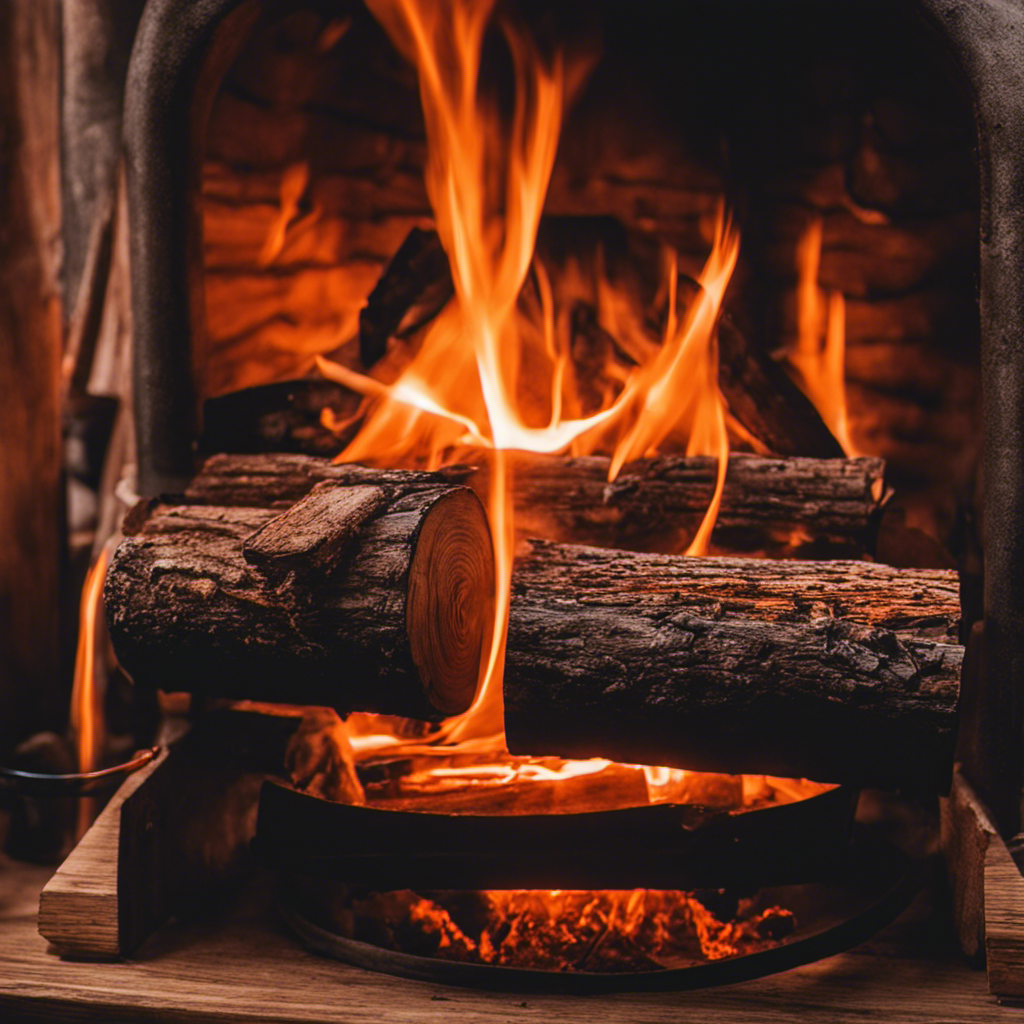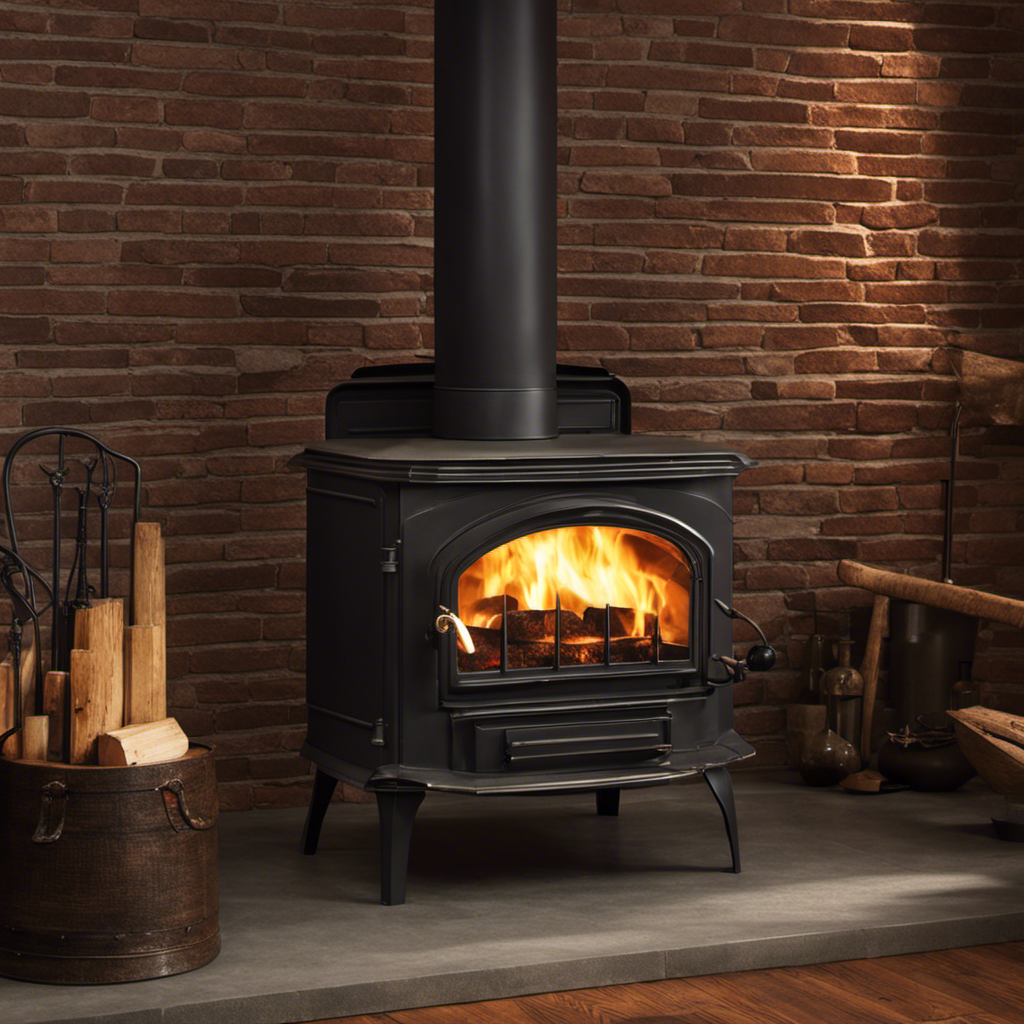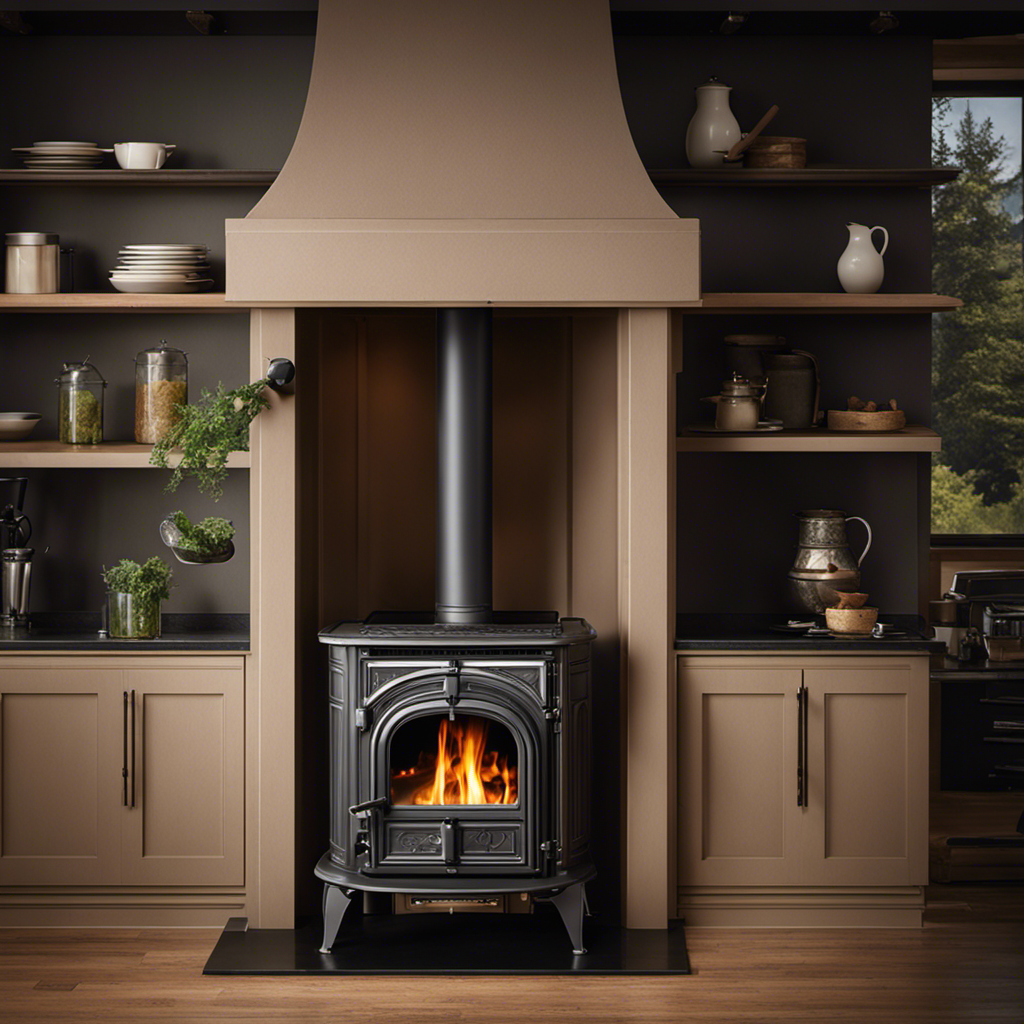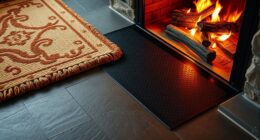Through my experiences, I’ve honed my skills in fire-making and have come to understand that crafting the perfect fire is essential for enjoying a snug evening by the wood stove.
By selecting the right firewood, preparing the stove, and arranging the logs just so, you can create a warm and inviting ambiance.
In this article, I’ll guide you through the steps to build a nice wood stove fire, ensuring that you stay toasty all winter long.
Key Takeaways
- Quality firewood and proper seasoning are crucial for a successful wood stove fire.
- Regular maintenance and cleaning of the wood stove are essential for optimal performance and safety.
- Building a safe fire requires a sturdy base, proper ignition techniques, and adherence to safety precautions.
- Arranging firewood in a crisscross pattern and using seasoned wood with low moisture content promotes efficient burning.
Selecting the Right Firewood
I’m learning that the quality of firewood is crucial for a successful fire. Proper storage and seasoning firewood are key factors in ensuring a clean and efficient burn.
When it comes to storing firewood, it’s important to keep it off the ground and protected from moisture. This helps prevent the wood from rotting and becoming unusable.
Additionally, firewood should be properly seasoned before use. Seasoning involves allowing the wood to dry out, typically for at least six months to a year. This reduces the moisture content, making the wood burn more efficiently and produce less smoke.
Well-seasoned firewood also ignites more easily and generates more heat, providing a longer-lasting fire. By following these steps, you can ensure that your firewood is of the highest quality, resulting in a warm and cozy fire every time.
Preparing the Wood Stove
To optimize the wood stove’s performance, proper maintenance and regular cleaning are essential.
Cleaning the wood stove is crucial to ensure it operates efficiently and safely. Over time, soot and creosote can accumulate inside the stove, which can restrict airflow and increase the risk of a chimney fire. Regularly cleaning the stove’s interior and removing any debris or ash will help maintain proper ventilation and prevent these issues.
Additionally, it’s important to check for proper ventilation when preparing the wood stove. Make sure all vents are clear and unobstructed to allow for adequate airflow. This will ensure that the fire burns efficiently, providing maximum heat output and minimizing the risk of smoke entering the room.
Building the Base of the Fire
Sweeping away the ashes, I carefully arrange the logs to form a sturdy base for the fire. Building a solid foundation is crucial for a successful wood stove fire. To ensure a safe and efficient burn, it’s important to consider firestarter options and practice proper safety precautions.
When it comes to firestarters, there are various options available. From traditional newspaper and kindling to commercial fire starters and even DIY options like wax-coated cotton balls, it’s essential to choose a method that suits your needs and preferences.
However, regardless of the firestarter option you choose, safety should always be a top priority. Here are some important safety precautions to keep in mind:
- Clear the area around the wood stove from any flammable materials.
- Use a fire-resistant rug or mat to protect the floor.
- Keep a fire extinguisher nearby and ensure it’s in good working condition.
- Never leave the fire unattended and always extinguish it before leaving the house or going to bed.
Arranging the Firewood
How should I stack the firewood to ensure an even burn?
Stacking the firewood properly is essential to create a consistent and efficient burn in your wood stove. There are a few key techniques to keep in mind when arranging your firewood.
First, it’s crucial to use a crisscross pattern. This allows for better airflow and promotes a more even distribution of heat.
Additionally, be mindful of the wood moisture levels. Burning wet or damp wood can lead to a smoky fire with less heat output. It’s recommended to use seasoned firewood with a moisture content below 20%.
Lastly, make sure to leave enough space between the logs to allow for proper oxygen flow.
Igniting and Maintaining the Fire
Since I’ve been using newspaper as a fire starter, igniting and maintaining the fire has become much easier. Igniting a wood stove fire requires proper technique and troubleshooting common issues can help ensure a successful burn. Here are some effective igniting techniques and solutions to common problems:
| Igniting Techniques | Troubleshooting Common Issues |
|---|---|
| Crumple newspaper and place it in the stove’s firebox. | If the fire is struggling to start, check for wet or green wood. |
| Stack small kindling on top of the newspaper. | Insufficient air flow can cause a weak fire. Open the air vents to increase oxygen supply. |
| Light the newspaper, allowing the flames to catch onto the kindling. | If the fire goes out frequently, it may be due to a lack of draft. Adjust the damper to improve airflow. |
Conclusion
In conclusion, building a nice wood stove fire is a skill that can be easily mastered with the right knowledge and preparation.
By carefully selecting the right firewood, properly preparing the wood stove, and arranging the firewood effectively, you can create a warm and cozy fire that will provide both heat and ambiance.
For example, imagine sitting by the crackling fire on a cold winter’s night, with the gentle glow casting a warm and inviting atmosphere in your living room.
Logan’s affair with adventure began in childhood. He hailed from a small town where vast forests bordered one side and endless shores stretched on the other. His days were spent exploring uncharted woods, climbing tall trees, or listening to the tales of old sailors. This early immersion in a world brimming with stories and mysteries became the foundation of his passion for writing.











